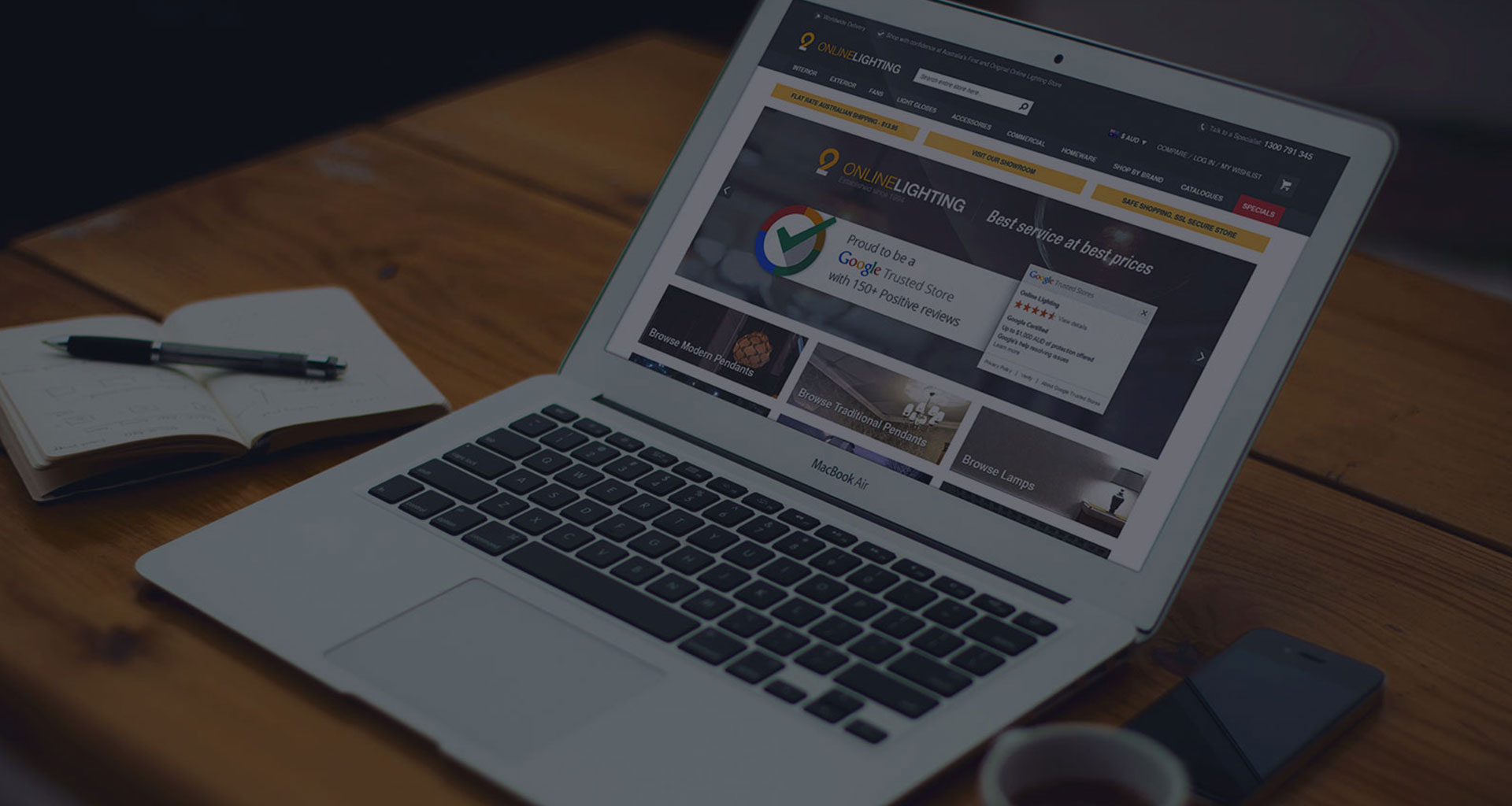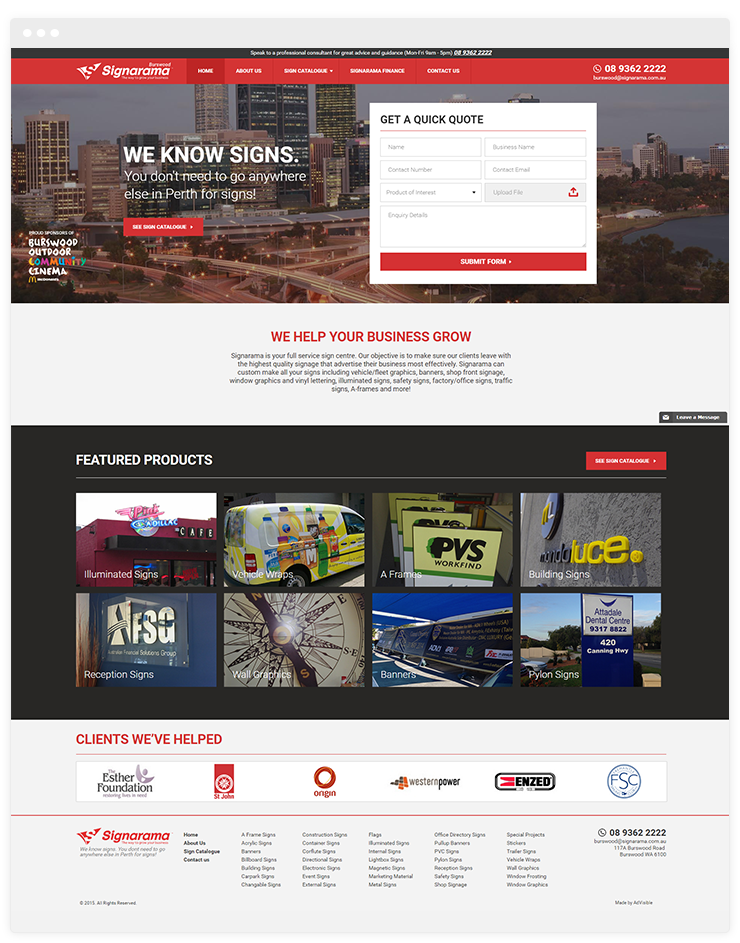If you are a business looking to create a new website or redesign an existing one, you usually have two options. Your initial decision can determine the success of your future online performance.
- Custom built website
- Template-based website
Your decision will depend on many factors that I will cover in detail, but some primary factors to consider are budget, project timeline, the level of branding required, the uniqueness you desire, and user experience, just to name a few.
It is really important to do your research before opting for one. Make sure you understand the limitations and possibilities of both options. You must have full clarity over your long-term business goals to ensure that the solution allows you to reach your end goal.
Over my years in the industry, I have witnessed a fair share of businesses that have made the wrong decision, subsequently wasting a considerable amount of time, effort, and money. I’ve written this article to educate businesses on the different options available, and what may work best for you. Keep in mind that this is just a general guide to help you make the right decision. Please understand each project is unique, therefore requiring a different scope of deliverables.
What is a Custom Built Website?
A custom website is developed from scratch based on a set of specifications and expectations to bring a conceptual idea to life. From graphics to information architecture, from navigational structure to the content management system, every element is pieced together by a web development team or an expert.
In simple words, a custom website has infinite possibilities. If a technical web developer is behind the project, a business can achieve pretty much everything they can think of on their website.
Custom built websites will involve more work which results in more time and higher cost. It requires technical skills, expertise and experience but it delivers almost everything that you may be after.
Here are some examples of custom websites AdVisible have developed from scratch.
What are the Advantages of a Custom Built Website?
Listed are some key advantages of working with custom built website.
- Customisable – Meet the growing needs of your business with a custom site. It allows more control over design, content and functionality. If a website requires complex functionality, it is almost impossible to find a template that completely satisfies your needs.
- Unique – Custom websites achieve a higher level of uniqueness because the initial design is developed based on your business. With templates, it’s more than likely that thousands of others have purchased the same template as you.
- User Experience – Provide a custom and effective user experience to your website visitors, effectively improving your conversion rates.
- Responsive – A majority of modern custom websites are responsive which means they automatically readjust to the visitor’s device.
- Effective Marketing Tool – Businesses with clear long-term marketing strategies can create a website that truly reflects their marketing strategy.
What are the Disadvantages of a Custom Built Website?
Listed here are some of the top issues with custom websites.
- Expensive – One of the main reasons why small businesses choose templates instead of custom is the initial cost involved. However, I strongly believe it does pay off in the long run through better marketing results.
- Time Restraints – >As there is more work involved, they also consume more time.
- Lack of Expertise – It may be difficult to find the right web developer to work with if your website is complex or very detailed. Make sure you find someone who truly understands your requirements, otherwise they will not be able to paint an accurate picture on your website.
- Responsive – A majority of modern custom websites are responsive which means they automatically readjust to the visitor’s device.
- Effective Marketing Tool – Businesses with clear long-term marketing strategies can create a website that truly reflects their marketing strategy.
What is a Template Based Website?
Template websites are pre-designed templates usually available online for a low cost and sometimes free. There are tools like Weebly, Wix and other similar website builders that allow users to find a template and then create their basic design by adding content and customising different features.
Similarly, there are Content Management Systems (CMS) like WordPress and Joomla that also allows users to work with pre-built templates. In fact, out of the top 10 million websites worldwide, 25% of them used WordPress.
Everything is usually already pre-built with a template. All you need to do is add content to personalise it to your business. It is no doubt initially cheaper and faster to launch a template over a custom site.
Here is an example of template website.
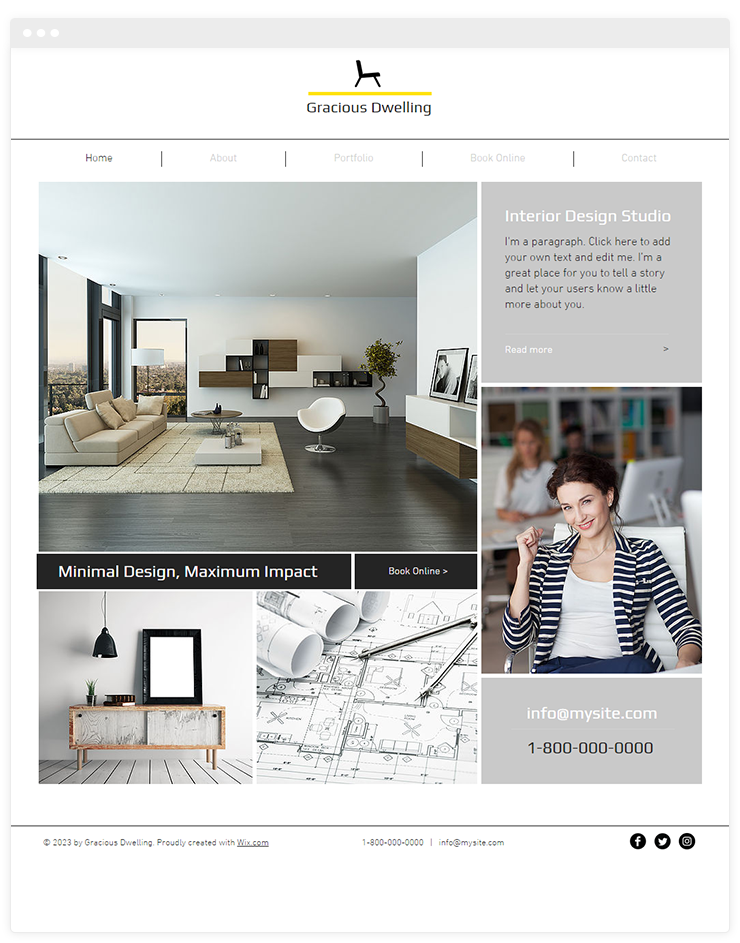
What are the Advantages of a Template Based Website?
Here are some reasons why you might find templates as the best fit for your needs.
- Cheap – A smaller initial investment to launch the website. If you have a lot of free time and your design requirements are basic, you could potentially create a website for next to nothing if you invest the time.
- Fast – As the template is already pre-built, all you need to do is insert your content, images and perform some minor edits. You can hire a web developer to perform this quickly for you.
What are the Disadvantages of a Template Based Website?
Listed here are some of the reasons why template based websites might not be for you.
- Limited Customisation – They are not as customisable as custom websites due to the template already being pre-built.
- Not Unique – You will lack uniqueness, and your website will look similar to many other websites which used the same or similar template.
- Difficult to Find the Perfect Template – If you have a unique design theme and outlook of your website in your mind, there is a high probability that you will fail to find a template that truly reflects your business.
- Slow Site Speed – A majority of template websites are not optimised for site speed and can take a long time to load, subsequently affecting your overall user experience.
- Limitations – You are limited to the defined parameters of the template in your graphic design and navigational capability.
- Responsiveness – Not all website templates come responsive which is very important to your search engine rankings and mobile user experience. However, more and more themes are coming responsive these days.
- Limited Functionality – If a template lacks certain functionality, it is quite difficult to add or alter unless you’re an expert.
How Much Should a Website Cost You?
There is a considerable difference in the price points, however, you must compare the price with what you’re getting for your investment of time and money. The low cost of a template makes them popular among small businesses and start-ups.
An average custom website may vary from $1,000 to $80,000 and in some cases even more. Below are statistics from the Australian government displaying the average costs of the different types of websites.
Average Costs of a Website
| Website type | Template-based site | Custom site |
| Business card website | $400–$600. | $1 000–$2 000. |
| Folio website | $1 000–$2 000. | $5 000–$20 000. |
| Brochure website | $1 000–$2 000. | $5 000–$20 000. |
| e-Commerce website | $1 800–$4 000. | $10 000–$80 000. |
| Blogs | $400–$600. | $1 000 to $2 000 |
Source: digitalbusiness.gov.au
Even for a custom website, there is a huge variation in the investments which is often confusing for business owners. For example, what do you need to pay for? What do I need and what do I not need?
The issue is, most people don’t understand the technical back-end of a website. You simply can’t have an idea from just looking at it. A website aesthetically pleasing on the eye may be built on a cheap template with poor functionality.

AdVisible developed the official Online Lighting website. It is a prime example why complex and high volume websites need a custom solution rather than a template. This website has several custom functions that are extremely difficult to achieve even with the best and most expensive templates.
This project turned an unorganised website into a user-friendly and high performing eCommerce site. It features more than 40,000 products which required a custom CMS to be developed to assist with hassle-free uploads, product changes, managing SKUs and other product information.
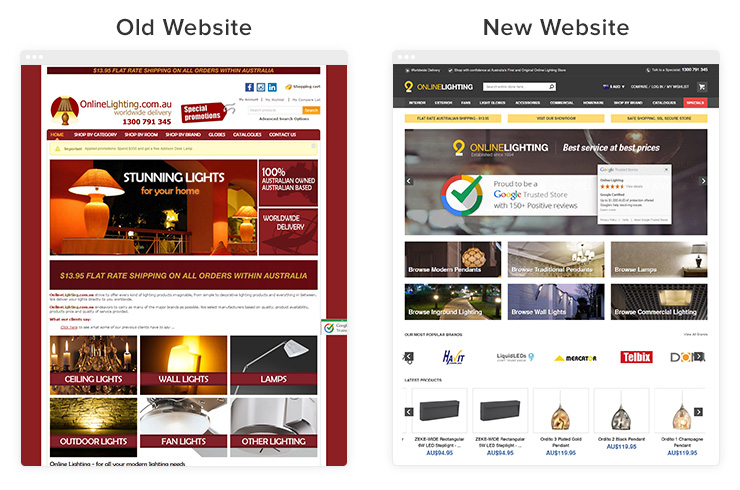
As you can see for yourself, the site structure and user experience improved drastically. We created more relevant content around high converting keywords which generating better SEO and PPC results. A more efficient checkout process was developed to reduce cart abandonment.
The point of sharing this case study is to explain that custom website costs vary based on the components and features a client seeks. The price also varies for each component based on the level of functionality. It’s also a perfect example of investing in the future growth of your business.
If Online Lighting did not improve their website when they did, their sales revenue would not have increased. Fast forward to today, they have already made back their initial investment due to the upgrade of their website. We helped decrease their cart abandonment by improving the user experience making it easier for visitors to find products and check out.
The project required different components based on the client’s requirements.
- Content Management System(CMS) – A CMS allows clients to edit information on their website without doing any coding or messing around with any of the files or website structure. A custom CMS was created to make it extremely for Online Lighting to upload, edit and manage 40,000 products.
- eCommerce Functionality – A feature required for retailers selling products online. If you are not an online store, you can avoid this cost.Almost 67% of the consumers abandon a website during the checkout process mainly because the checkout process is not optimised. AdVisible streamlined the checkout process for Online Lighting which significantly improved sales and reduced the checkout abandonment rate.
- Conceptual Design – The initial custom graphic design has a major impact on the overall cost of a project. The initial design may range from a simple minimalistic design limited to a few core pages to an award-winning design for a website with hundreds of pages. The more time spent in the design phase, the more it will cost.
- Content Creation – Whether you provide the content or have it written for you will alter your end costs. It depends on the quality of content, the number of words and pages. I would advise that the content is developed by an expert SEO copywriter to ensure that you are targeting relevant keywords to your business written in the correct format.
- SEO – A website agency who cares about your long-term growth makes sure that on-page SEO elements are covered or discussed. Based on your desired search engine goals, the SEO cost may vary with the complexity of the SEO strategy and techniques used.
- Database Integration – Database integration adds good value to your business and website. We helped Online Lighting improve their processes and data which effectively helped them grow at scale.
These are just a few examples of components to explain why projects are usually quoted based on requirements. There are other components you also need to take into consideration, especially the amount of ongoing website maintenance you require. For example, domain and website hosting, security, plug-in updates, backups, and conversion rate optimisation.
Just to reiterate, there is usually no standard pricing for a custom website. It simply depends on the complexity of features and elements, the quality of the design, content, and other features.
From my time in the industry, there is rarely a bargain when it comes to custom websites as web developers usually have different hourly rates. You are essentially paying for their experience, technical skills and abilities, hence why developers and designers charge different hourly rates. Usually, the more you invest, the better the design, functionality, user experience, features, and ongoing support you get.
For someone who is after a template based design, getting it produced for next to nothing is possible if you have enough time, and you’re willing to sacrifice several benefits.
4 Important Questions to ask yourself
Ask yourself the below question in the decision-making process.
1. Which option will deliver the better long-term return-on-investment?
Custom websites are usually better to generate higher ROI. The unique design, high-end customer experience, better branding and other factors contribute in generating a higher ROI. Your ROI is dependent on your products, services, and marketing campaigns. Regardless of what industry you’re in, you should always be clear on how much revenue you want to make back from your website.
2. Which one is better from a design aspect?
Custom websites are better at meeting design expectations and goals of your business. On the other hand, it is really difficult to create a unique design on your own from templates. If you are using a template, the website will probably look similar to many other websites on the internet.
3. Which one is a better option for long-term scalability?
You may find it very difficult to customise your template if you want to expand your design to showcase new features and functions.
A custom website is easily expandable and customisable. If your business goal is to reach a considerable amount of inbound traffic, a template based website may not be able to support that efficiently. Most templates are one-size fits. However, all businesses are different so you’re bound to run into obstacles.
4. What is the Average Life of each website?
Custom websites have a longer shelf life. According to Go-Globe, the average lifespan is 3 to 4 years for a custom website and 1 to 1.5 years for a template.
Custom websites are initially tailored to your business, therefore making them more cost effective in the long term. You may have to spend more money and time for maintenance on a template as your business and traffic continues to grow.
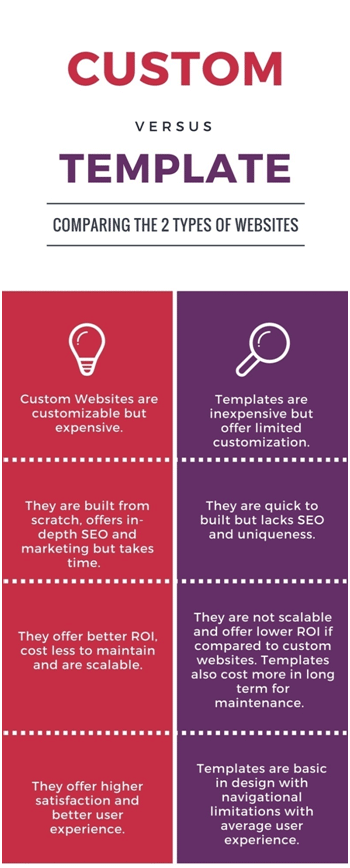
Conclusion
Hopefully, you already have an idea by now which one works best for you, but here is a final piece of advice in helping you make the right decision.
Templates may work best for you if you are a small business with limited budget, want your website live ASAP, want to target a very small audience, and expect low traffic. If you also don’t require high levels of customisation, a template might just be enough for you. If your budget is around $4,000 or below and you have no intentions for future growth, a template will be more practical and cost effective.
Custom websites work best for businesses that want to grow and seek customisable features. It works best for businesses looking to establish a brand through an aggressive marketing strategy.
In simple words, if you are a business that values marketing, branding, uniqueness, and has big plans for growth, the best option is a custom website. Businesses with a budget of $5,000 or more can get a decent custom website, but again it depends on your requirements.
Whatever path you take, I recommend that you choose a well-established and credible web development agency, and make sure that you own your website at the end of the day. Steer clear of companies that build your website on their CMS and don’t let you own your website, or charge you a ridiculous fee to take it.
If you have a potential website project that you want to discuss or would like more friendly advice, simply drop me an email at ivan@advisible.com.au or comment below.
